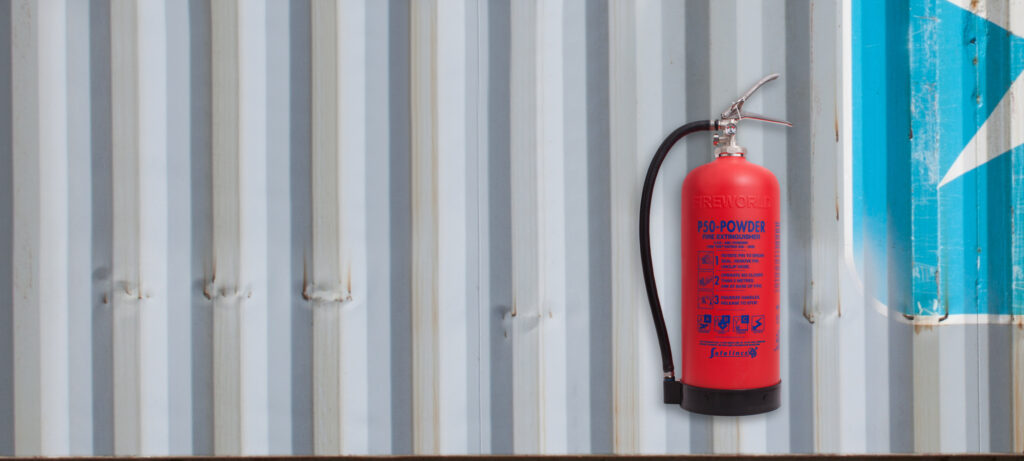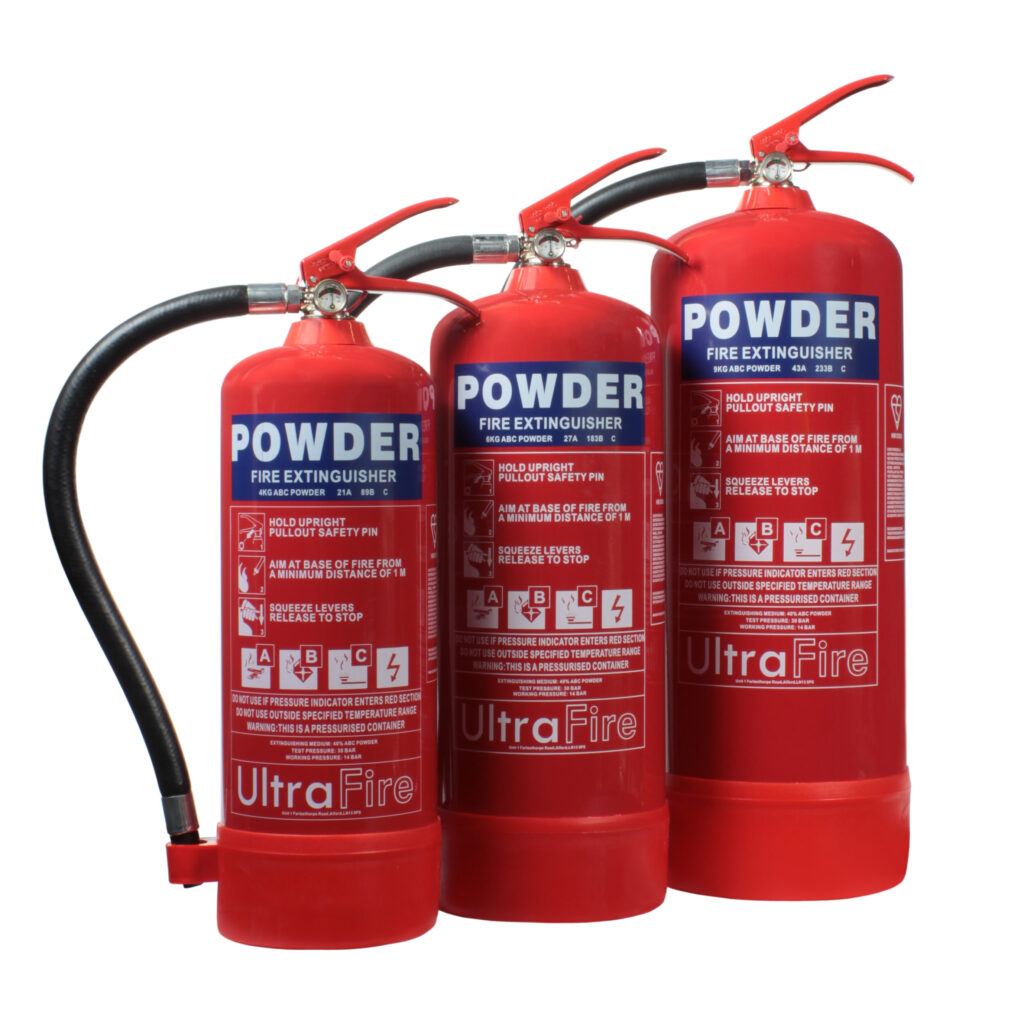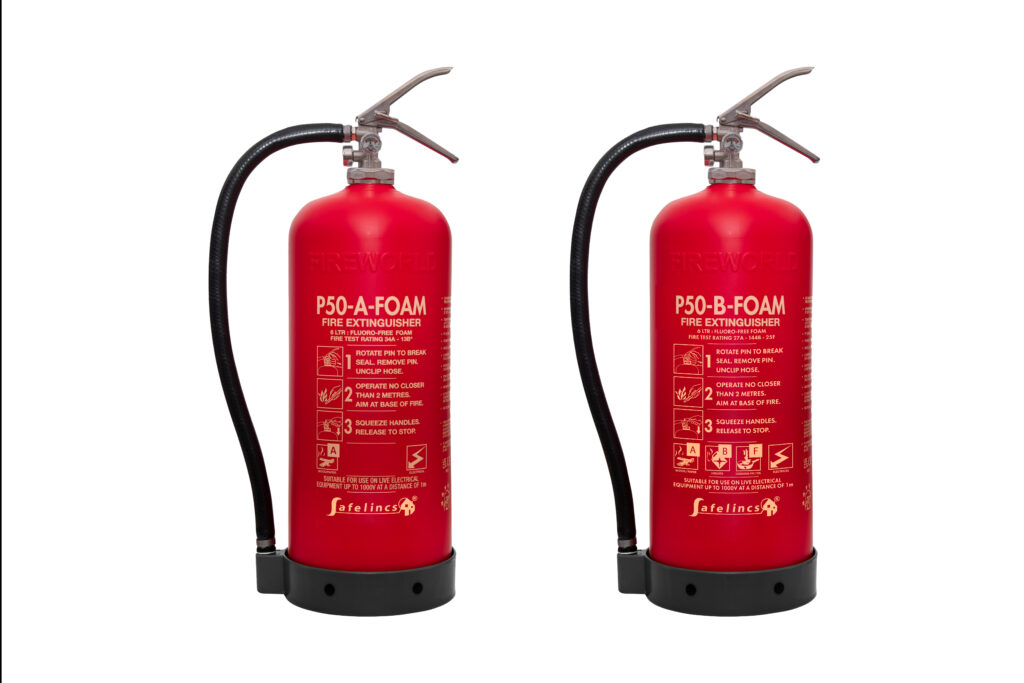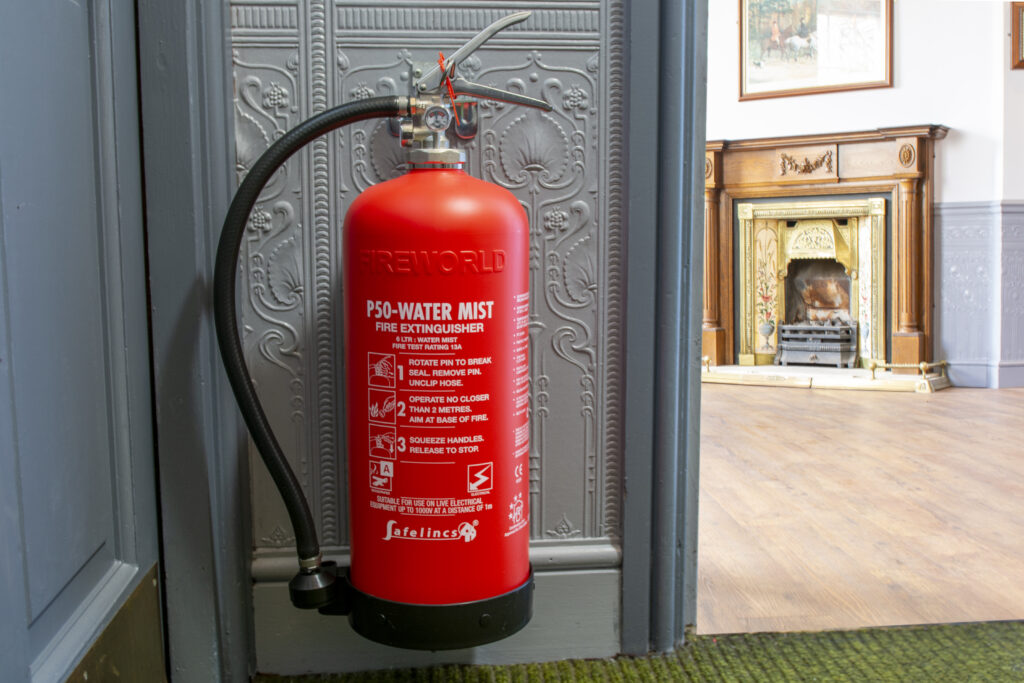Tuesday 16th January 2024
Both foam and powder extinguishers are commonly found in workplaces and public spaces across the UK, but which is best? Both types of extinguisher are suitable for use on most common fire risks, making them versatile, and a popular choice. Selecting the best fire-fighting solution for your organisation can be difficult and will depend on the type of environment and risks that exist.

Powder Fire Extinguishers
As the name suggests, powder extinguishers contain a dust like powder, which when discharged, forms a thin layer on top of the burning fuel. This layer absorbs heat and deprives the fire of oxygen, which prevents the continuation of the chemical process of combustion.

Pros of Powder Extinguishers
- Powder extinguishers are versatile, being suitable for Class A, B, C fires and fires involving electrical equipment
- Fluorine-Free
- Powder units can be up to twice as effective against class A fires as foams
- Does not freeze so can be used outside all year round
- Safe for use on live electrical equipment up to 1000V at a distance of 1m
Cons of Powder Extinguishers
- No class F rating
- Messy and costly to clean up after discharge
- Should only be discharged outdoors
- Discharge can aggravate respiratory and digestive systems
- Can reduce visibility when discharged
Foam Fire Extinguishers
Due to the harmful PFAS chemicals that AFFF Foam contains, the manufacture of AFFF foam fire extinguishers is expected to be banned before the end of 2026. Safelincs have already discontinued the sale of AFFF Foam and water additive extinguishers, and some manufacturers have developed a range of more environmentally friendly alternatives.
Britannia Fire has launched two eco-foam P50 Service-Free Fire Extinguishers: A-Foam and B-Foam. Like AFFF Foam, the medium in these units works by covering the fire, and forming a seal that cuts off the oxygen supply, and has a cooling effect.

Pros of Foam Extinguishers
- Suitable for indoor use
- Fluorine-Free
- Suitable for indoor workplace environments with class A, B and live electrical equipment risks (select either A or B foam depending on the amount of class A or B risk)
- B-Foam has an additional F class rating
- Safe for use on live electrical equipment up to 1000V at a distance of 1m
Cons of Foam Extinguishers
- No class C rating
Water Mist Fire Extinguishers – an Alternative to Powder and Foam
Water mist fire extinguishers are 100% environmentally friendly, as they contain only de-ionised water. Upon discharge, water mists therefore release no harmful substances, and leave no messy residue to clean up. The water they contain is de-ionised, and so does not conduct electricity. This means that they are also safe for use on live electrical equipment, making them an ideal replacement for the AFFF foam extinguishers.

Foam vs Powder Extinguishers – Which Extinguisher Should I Choose?
In premises where the fire risk assessment has identified only Class A and/or Class B risks plus fires involving electrical equipment, there are several types of fire extinguisher which may be suitable:
Ultimately, the type of extinguisher that needs to be installed on a premises will be determined by the risks identified by the fire risk assessment. Where there is overlap, and more than one type of extinguisher would be suitable, it is up to the responsible person to ensure that they have selected the most effective and appropriate fire-fighting solution for their organisation or property.
Powder extinguishers are often best for outdoor environments where there is a mixed fire risk. Water mist or eco-foam extinguishers are ideal for indoor spaces with common fire risks.
If you are still unsure which type of extinguisher to install on your premises, why not book an extinguisher survey with one of our qualified engineers. We also offer free site surveys for service-free P50 fire extinguishers.
